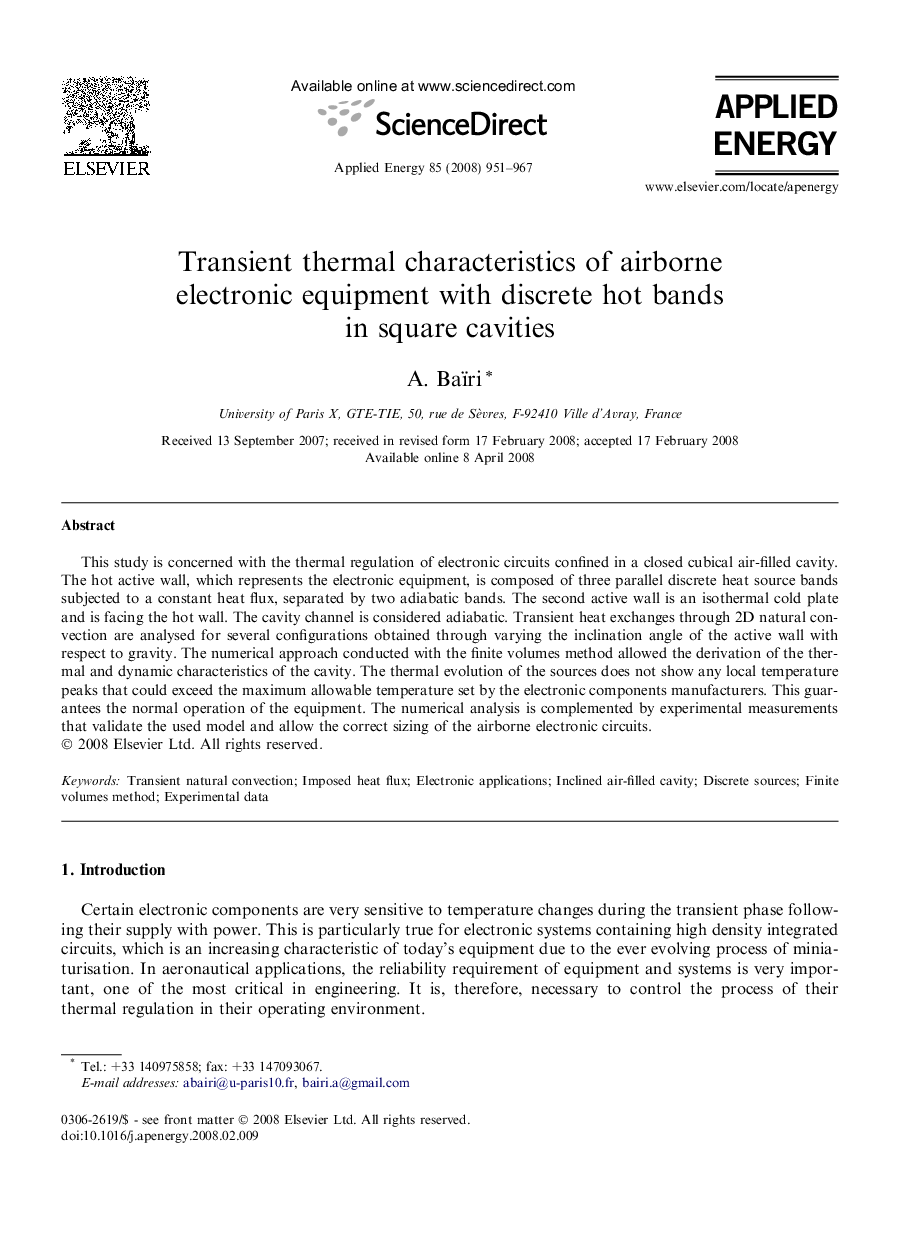| Article ID | Journal | Published Year | Pages | File Type |
|---|---|---|---|---|
| 245173 | Applied Energy | 2008 | 17 Pages |
This study is concerned with the thermal regulation of electronic circuits confined in a closed cubical air-filled cavity. The hot active wall, which represents the electronic equipment, is composed of three parallel discrete heat source bands subjected to a constant heat flux, separated by two adiabatic bands. The second active wall is an isothermal cold plate and is facing the hot wall. The cavity channel is considered adiabatic. Transient heat exchanges through 2D natural convection are analysed for several configurations obtained through varying the inclination angle of the active wall with respect to gravity. The numerical approach conducted with the finite volumes method allowed the derivation of the thermal and dynamic characteristics of the cavity. The thermal evolution of the sources does not show any local temperature peaks that could exceed the maximum allowable temperature set by the electronic components manufacturers. This guarantees the normal operation of the equipment. The numerical analysis is complemented by experimental measurements that validate the used model and allow the correct sizing of the airborne electronic circuits.
